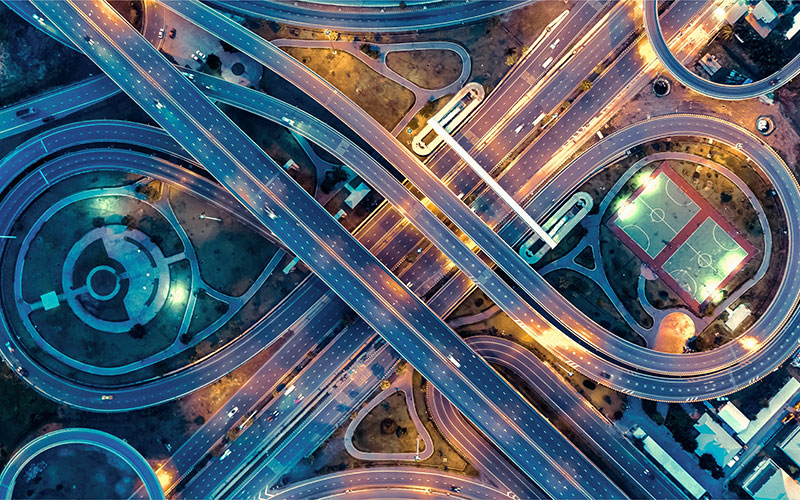Blue Yonder is committed to helping its customers face the unexpected. To provide insights into the COVID-19 coronavirus pandemic and its impact on supply chains around the world, we are delivering a blog series to help anyone looking for support and advice. Our experts, who have spent years in the supply chain industry, share their insights.
The very nature of supply chains—the movement of goods and services—means it’s unsurprising they have been drastically disrupted by the global COVID-19 pandemic. We have heard the term supply chain resilience around the globe since the pandemic began.
With several areas in lockdown, borders shut, and businesses ordered to temporarily close by governments, many organizations were thrown into chaos. Supply chain planners around the world are grappling with an unprecedented task of balancing extreme demand and supply variations occurring at the same time.
Lean or Frail?
Traditionally, supply chains were tuned based on lean manufacturing concepts such as minimizing inventories, optimizing asset utilization, etc. By making their supply chains as lean as possible, companies could provide goods quickly and cost-effectively. Though lean manufacturing played a vital role in improving the supply chain efficiencies, it also has some serious drawbacks exposed by the pandemic.
Disruptions were viewed as those occurring in the short term, such as a late shipment or a machine breakdown. Organizations by and large have had enough buffer or strategy in place to be resilient enough to offset such disruptions.
Perhaps rather than being lean, supply chains had accidentally become frail—they were simply not prepared to react to the disruptions we have observed as of late.
As McKinsey & Company notes, it’s impossible to foresee unknown risks—whether they’re natural, such as a volcanic eruption near a factory, or man-made, for example, if a supplier goes out of business. No crystal ball exists that will allow businesses to predict these kinds of events, so they must put their supply chains in a better position to react when they happen.
Resilient Over Lean
Once the impact of the pandemic settles down and a new “normal” emerges, supply chain planners will soon stare at two daunting choices: should their supply chains be lean or should they be more resilient, based on their latest experience? Or should it be a combination of both? How should they manage a combination practically?
Resilience is key not just in the near term, but also in the medium and long term. The need for speed, visibility, and agility is greater than ever. The fixed cadence of hourly, daily, weekly and monthly runs may no longer be valid. Any event, depending on its scope, should trigger a corresponding and synchronous course correction throughout the planning horizon. The need of the hour is that the boundaries of the age-old fixed cadence-based planning need to be blurred in the quest for seamless planning.
Using Technology for 20/20 Vision
Supply chain management technology can also play a crucial role; if businesses cannot keep track of everything that is happening, how can they begin to react when they hit disruption? They need to evolve from reactive to proactive and predictive. How can a planner be alerted six months in advance that a critical raw material will be unavailable? Or that there could be labor unrest leading to capacity shortages? Any socio-economic event occurring in any part of the globe could have a cascading effect on many other supply chains.
This is where control towers can be deployed to give visibility overall activity, offering a visual representation that makes it possible to fully comprehend the events unfolding around us.
Once the visibility is achieved, businesses can also leverage artificial intelligence (AI) and machine learning (ML) to ‘read’ what is going on and recommend remedial measures through predictive analytics. In time, these advanced technologies could even implement the changes without the intervention from humans, to form an autonomous supply chain. This provides an organization with the required edge to stay ahead of the curve.
A Strategy for Getting Supply Chains into Shape
Once the chaos began and continues to unfold, too many businesses relied heavily on suppliers that were single-source and based halfway around the world. Therefore, it is important to ensure that fundamental supply chain strategies are in place, such as having an appropriate mix of strategic supplies for critical raw materials, enabling end-to-end visibility, and ensuring a good process orchestration.
Now’s the time to learn from this and build up better visibility and a higher level of risk-awareness. Businesses must focus on building up the muscles of a strong supply chain by using strategies that give them more options while employing technologies to provide extra insight and guidance. If they can do this, businesses will emerge with a stronger supply chain, putting them in a much greater position to deal with disruptions.


Comments are closed.